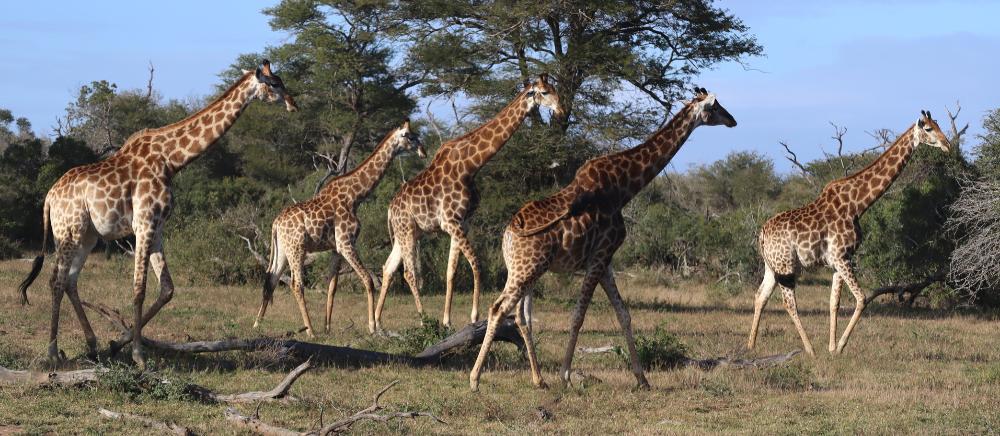
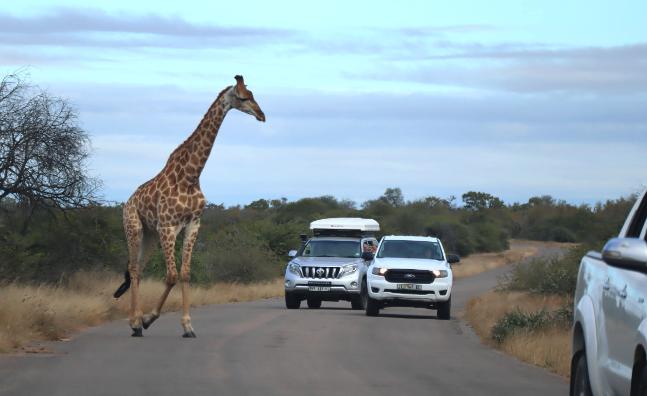

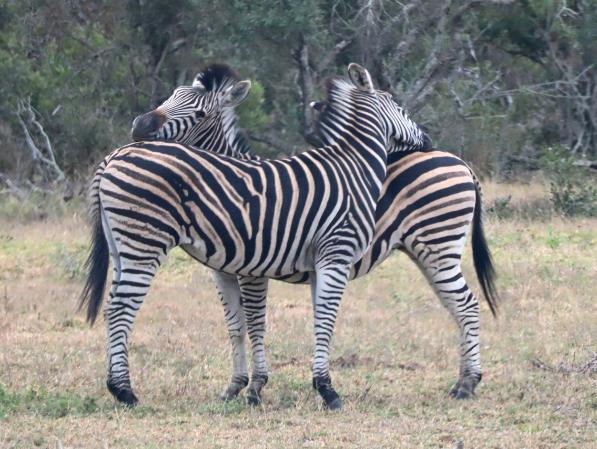


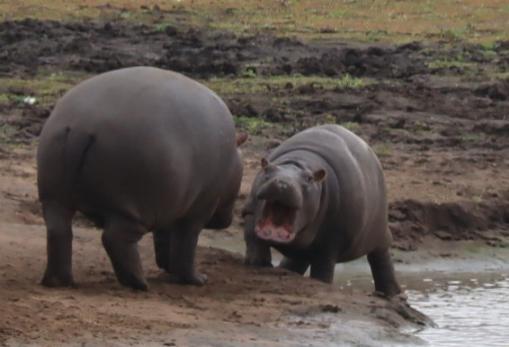
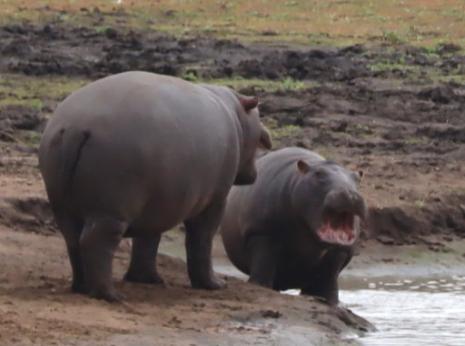

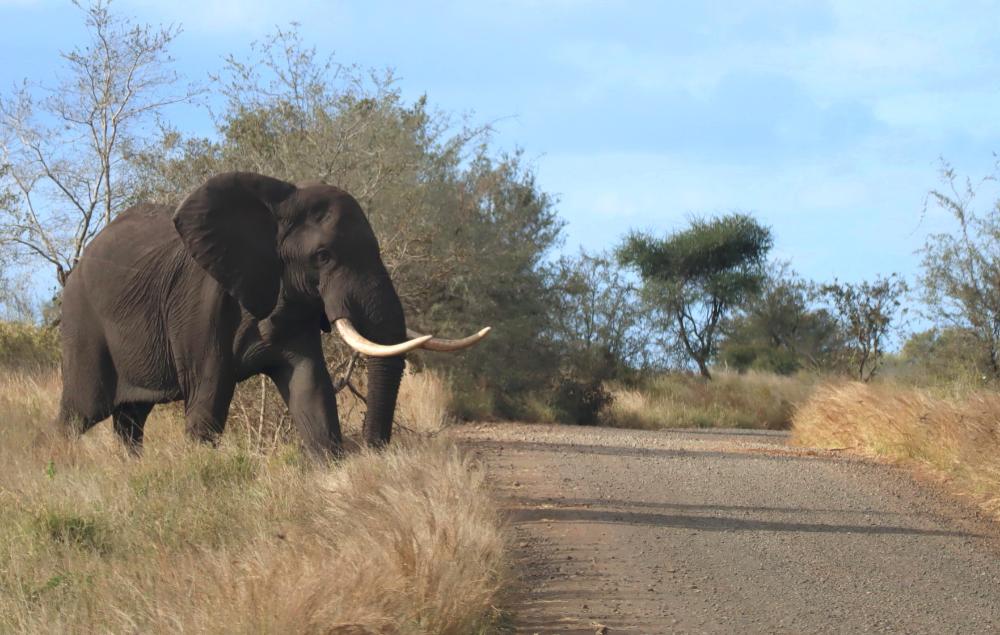

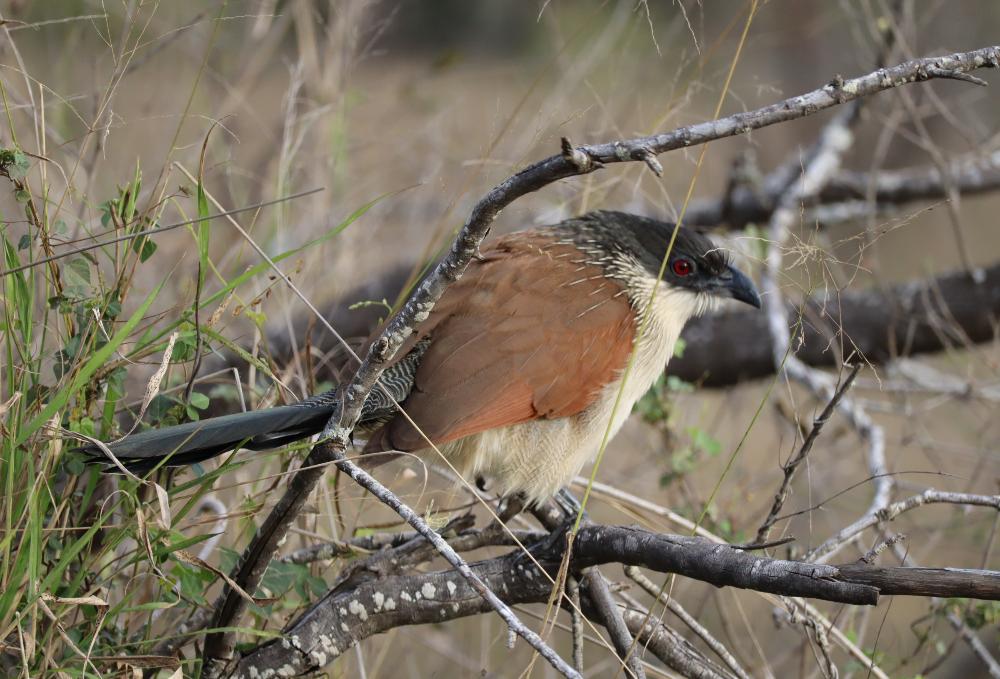
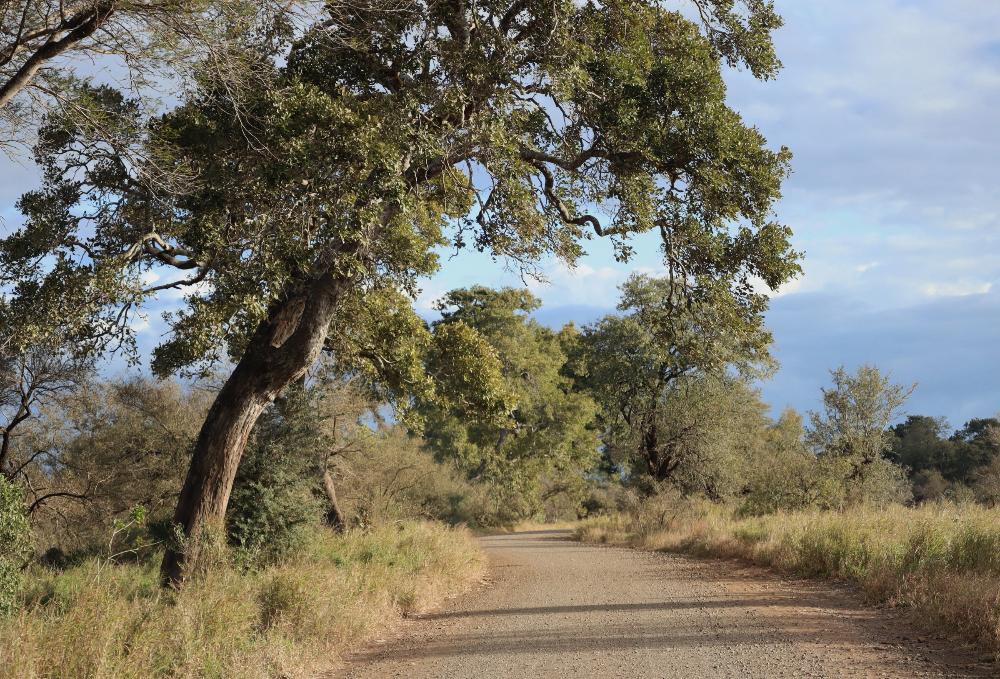
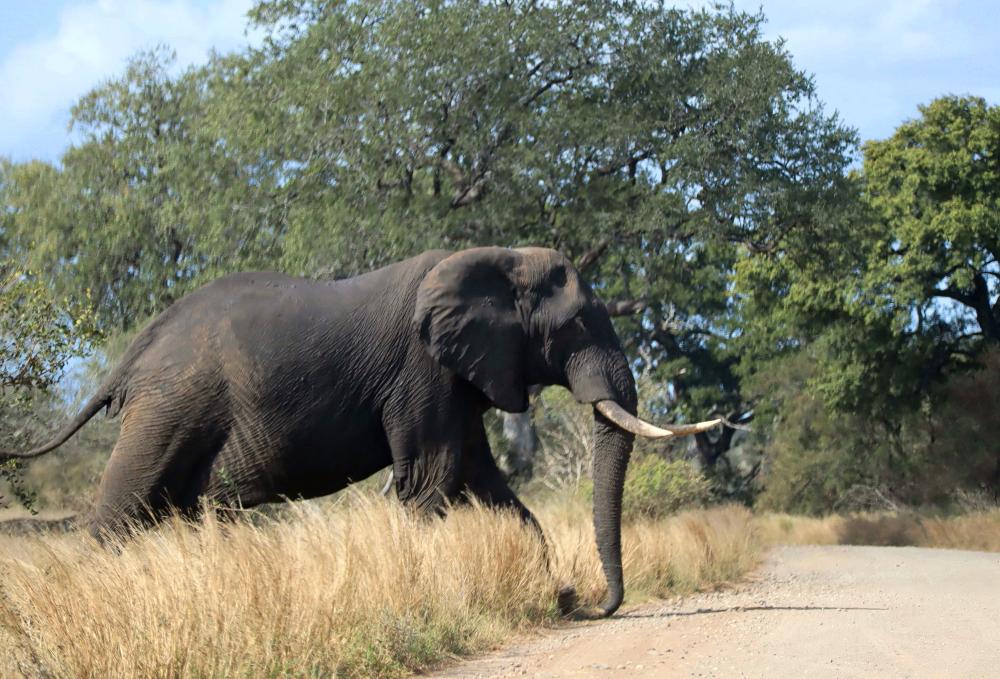


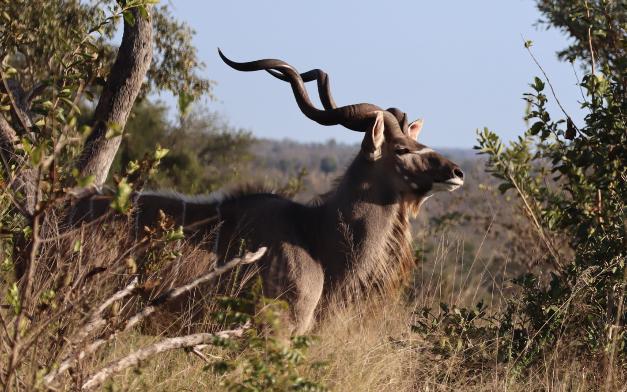
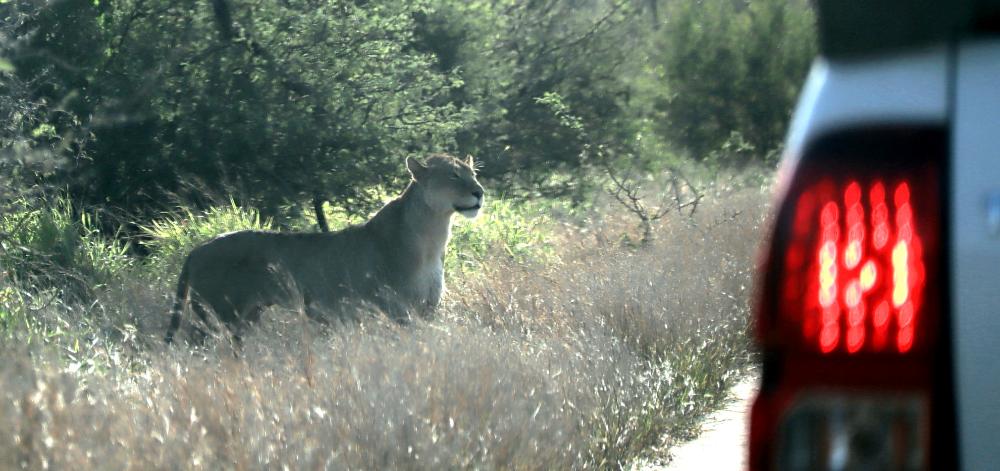
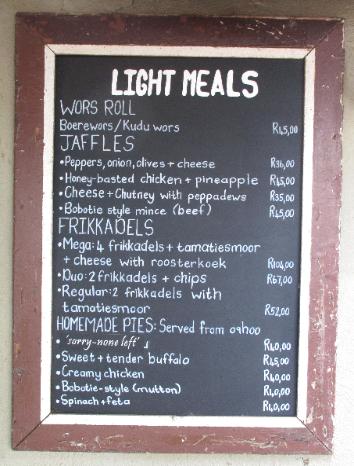



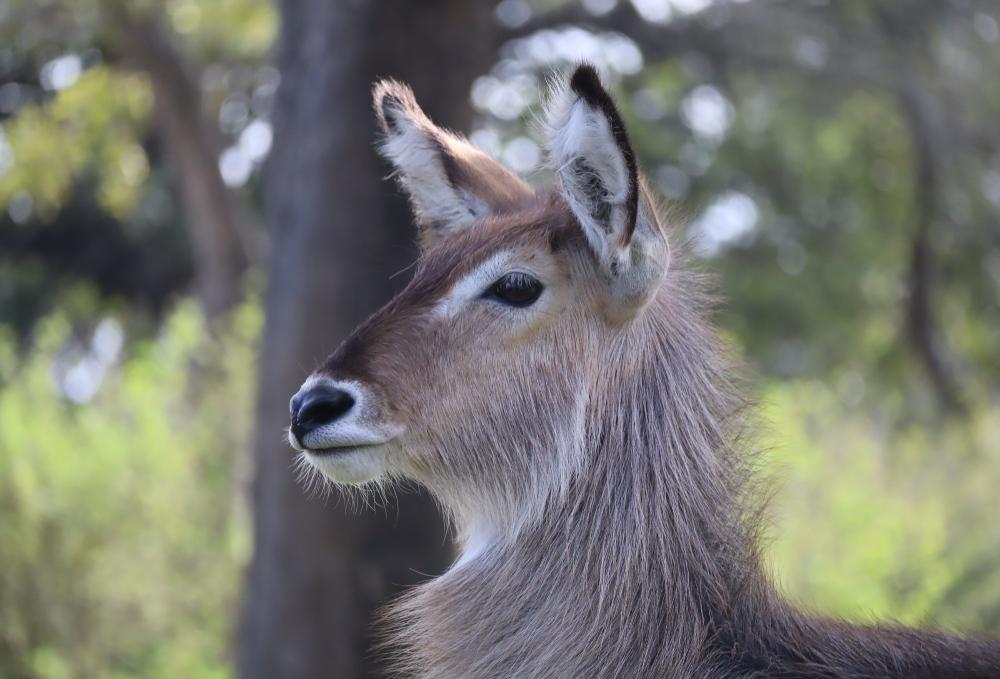
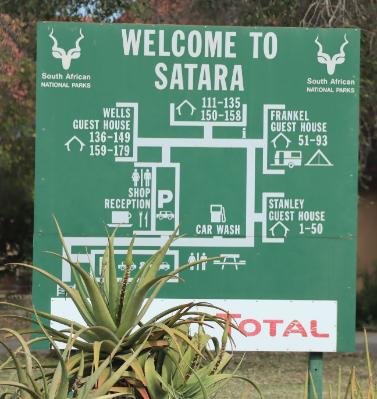

Where We Be
| One of our best sightings during our time at Satara Camp is this pack of wild dogs resting right beside the paved H7 |
| Satara Camp -- Kruger NP, South Africa |
One of the fun aspects of a self-drive safari at
Kruger is the cameraderie that can develop
between drivers, who often pause to exchange
info through open car windows about a rare
sighting up ahead. Sighting boards at camps
and rest stops can also give you insight into
where to keep a sharp eye out for hard-to-spot
animals like leopards or cheetah or wild dogs.
During our four-hour drive up to Satara Camp --
our most northerly camp -- we make a stop at
one such rest stop, called Tshokwane, where
we stretch our legs, get a bite to eat, and use
the facilities. Remember, you can't exit your car
except at designated points, so you'll want to
take full advantage of such rest stops when
you can. Since speeds are so low inside the
park -- 50 kph (30 mph) on paved roads, 40 kph
(25 mph) on gravel -- even drives that look
short on paper can take time, especially when
you factor in stops for sightings along the way.
For instance, Google Maps suggests the travel
time between Skukuza and Satara should be
about two hours, but it actually takes double or
even triple that depending on how much you
see along the way. But of course, the good
news is, that's why you're here in the first place!
Kruger is the cameraderie that can develop
between drivers, who often pause to exchange
info through open car windows about a rare
sighting up ahead. Sighting boards at camps
and rest stops can also give you insight into
where to keep a sharp eye out for hard-to-spot
animals like leopards or cheetah or wild dogs.
During our four-hour drive up to Satara Camp --
our most northerly camp -- we make a stop at
one such rest stop, called Tshokwane, where
we stretch our legs, get a bite to eat, and use
the facilities. Remember, you can't exit your car
except at designated points, so you'll want to
take full advantage of such rest stops when
you can. Since speeds are so low inside the
park -- 50 kph (30 mph) on paved roads, 40 kph
(25 mph) on gravel -- even drives that look
short on paper can take time, especially when
you factor in stops for sightings along the way.
For instance, Google Maps suggests the travel
time between Skukuza and Satara should be
about two hours, but it actually takes double or
even triple that depending on how much you
see along the way. But of course, the good
news is, that's why you're here in the first place!
| A pair of zebra engage in a bit of courtship |
| Animals always have the right of way here at Kruger |
| Next morning, we drive the paved H7 all the way to Orpen Camp and are surprised to see this pack of wild dogs lying almost in the road. Perhaps they like the heat from the pavement, because we see this same behavior from other animals later on. |
| At Nsemani Dam, we watch young hippos completely out of the water, actively sparring as their comrades look on -- a rare sighting indeed |
| With so many big animals to get excited about, it's easy to overlook the birds, but they're fun to watch too -- like this Natal spurfowl taking a dust bath |
| We have two close encounters with bull elephants along the S100 -- just look at those massive tusks! |
| Edging past this cape buffalo at a riverside pullout also makes us a bit nervous -- they can be notoriously cranky |
| Or this Burchell's coucal, aka Rainbird, which often makes its bubbling call right before it rains |
| In the late afternoon, we explore the S100 -- always a highlight of any stay at Satara Camp. This is one of the most popular dirt roads in the entire park. |
| We're also surprised to see two fish eagles hunting together in the same tree (they're usually solitary creatures) |
| A male kudu with impressive horns makes an appearance |
| A "journey" of giraffe roaming free always reminds you you're in Africa and nowhere else |
| As for wildlife sightings on the way to Satara, this lioness keenly watching a small herd of Cape buffalo across the road has to take the cake |
| The menu at Tshokwane Rest Stop is full of strange Africkaans words we’ve never heard of before -- like roosterkoek, jaffles, and frikkadels |
| We also learn that a skottle is a propane grill of sorts. This is the base, with a wok-like pan that sits on top. As you may know, the braai (outdoor barbecue) is an essential part of South African culture, and we see it everywhere we go in Kruger. |
| These waterbuck seem almost groomed, their manes are so pretty |
| Before reaching Satara, we take a slight detour to see the southernmost baobab tree in the world -- so says the posted sign |
| When a giant bull elephant decides to cross the road, you stop and wait -- and back up if necessary! |

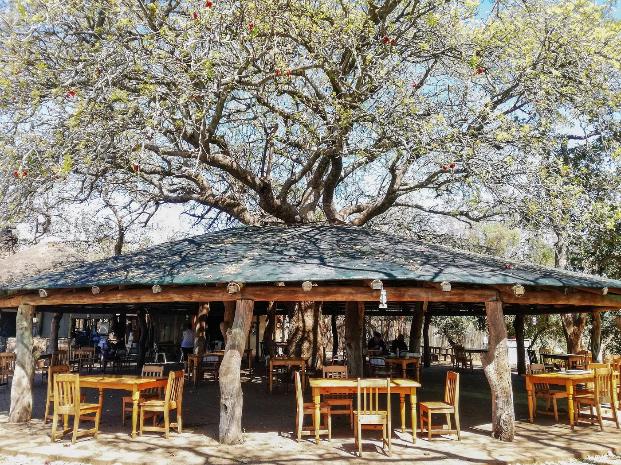

| A map of Satara Camp is posted at the entry gate (same for every camp we visit) |
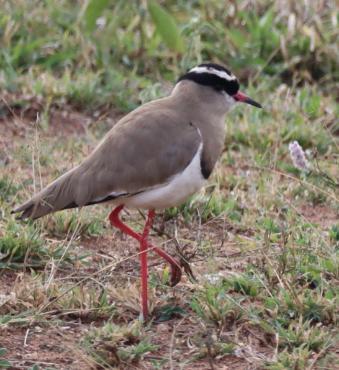
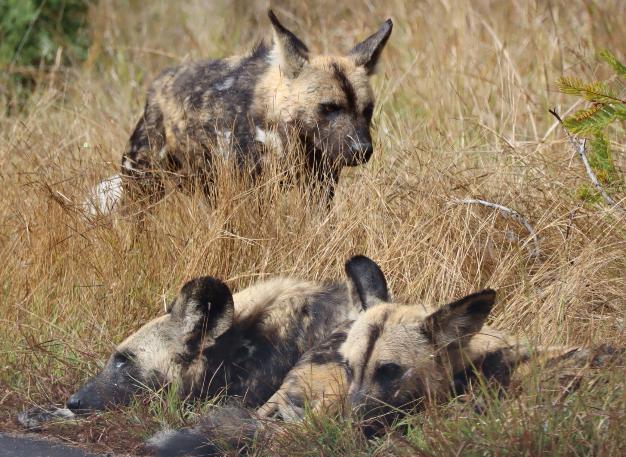
| Despite the posted warnings, a vervet pulls the equivalent of a "smash and grab" on us -- jumps down from the roof, lands on our table, grabs four french fries, and launches back up in two seconds flat. We never knew what hit us! |
| Our bungalow includes an outdoor kitchen, but the prices are so good here (15 rand = $1 US) that we end up eating out most nights -- or ordering pizza from the camp's takeaway counter |
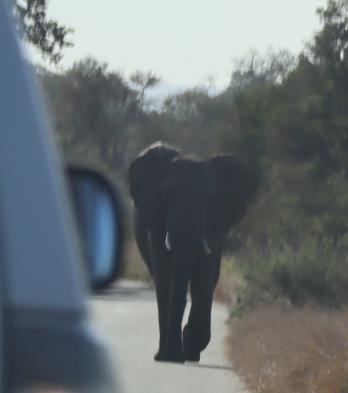
| And an elephant walks right towards us on the H1-3 |
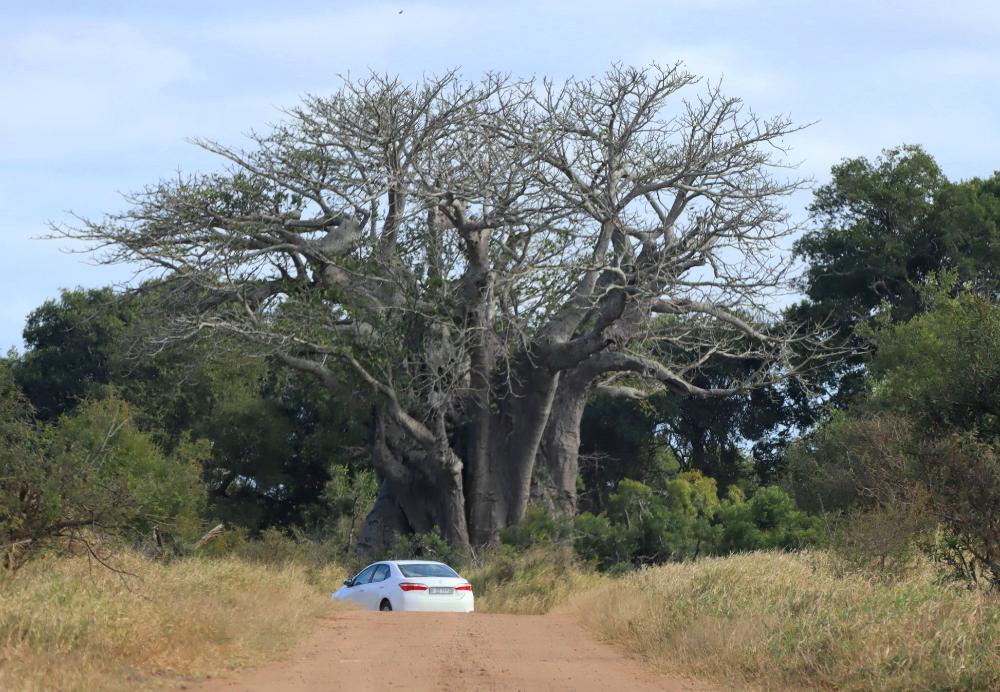
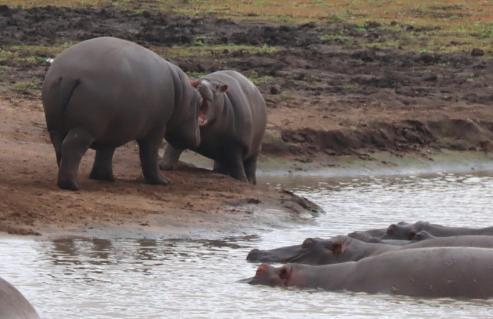
| While these mating giraffe wish for a bit more privacy |
| A crested barbet shows off its plumage |
| At least this crowned plover poses no threat (except to insects) |
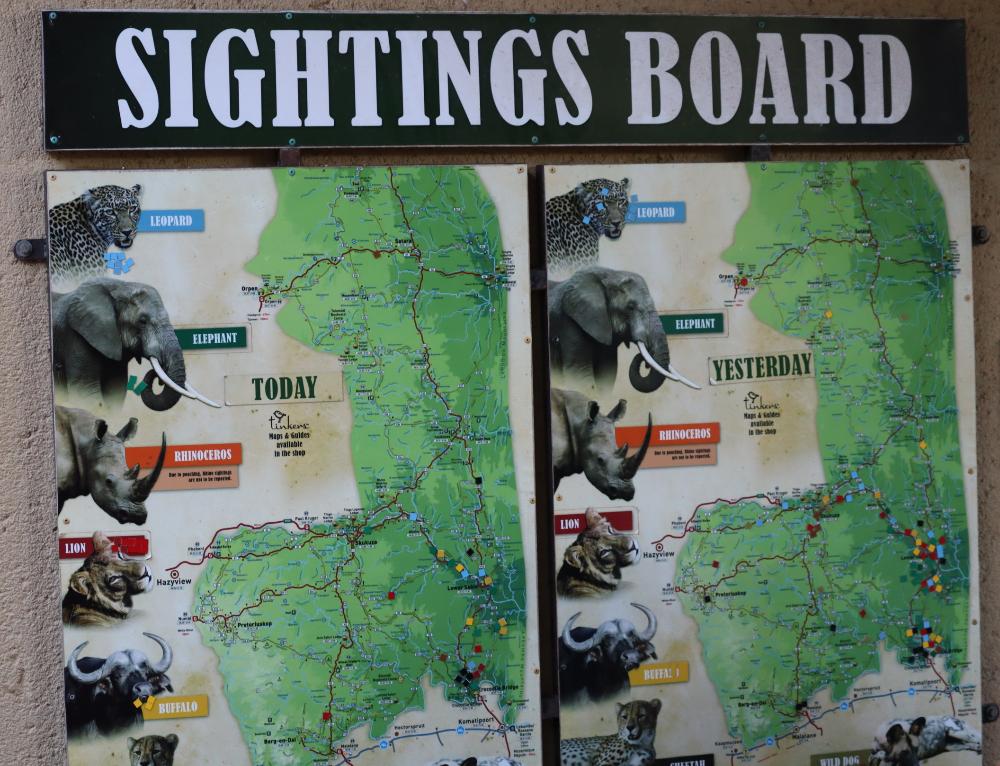
| Back at camp, people put colored pins on the sightings board to indicate what animals have been seen where |